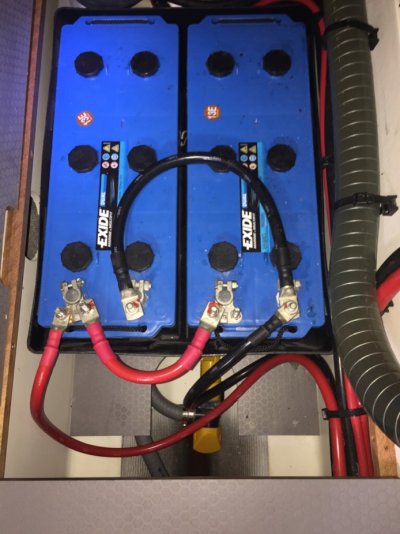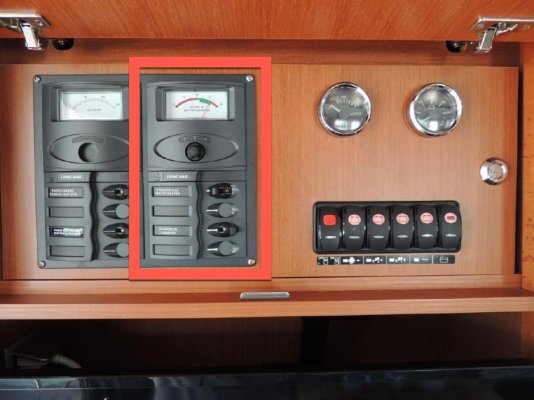MichaelB1969
Guru
- Joined
- Oct 15, 2016
- Messages
- 679
- Location
- USA
- Vessel Name
- Speedy Charlotte
- Vessel Make
- Beneteau Swift Trawler 44
Have a bit of a challenge finding replacements for my 12 volt house batteries. The boat came standard with two Exide ER660 batteries, placed side-by-side. The current Exide batteries are rated at (C20) 140 Ah and CCA (EN) 750 A. You can see the spec on them at:
http://detabatteries.com/wp-content/uploads/2015/07/exide-marine-spec.pdf
The issue is that the batteries are European sized and just fit (within a battery tray/box) into the 16.5" wide space between the engines (they are 7-3/8" wide). The American 4D batteries are too wide to fit side-by-side since they are typically each at least 8.5" wide. And shipping the Exide batteries from Europe doesn't seem to be a realistic option.
The existing space I have to fit the new house batteries is approx. 16" wide x 25" long x 8" high.
I've heard a proposed solution of placing 2 AGM batteries on their side, but I haven't seen any 4D batteries that are low-profile enough to work in the space when placed on their side.
Any other ideas? Are there other battery types I should consider? I'd like to go with AGM batteries and I'd like to have at least as much power as I had with the existing batteries (which are now dead). And I'd like to keep within the space the current batteries are located to avoid what I perceive to be a more costly project.
Lastly, there is a small chance that I might actually have 17" width, in which case, there is a small chance that two standard 4D batteries might fit. However, I don't think I'd be able to fit a single human hair between them. I won't know until I remove the battery box to get a more exact measure.
Thanks in advance for any help!
Best,
Mike
http://detabatteries.com/wp-content/uploads/2015/07/exide-marine-spec.pdf
The issue is that the batteries are European sized and just fit (within a battery tray/box) into the 16.5" wide space between the engines (they are 7-3/8" wide). The American 4D batteries are too wide to fit side-by-side since they are typically each at least 8.5" wide. And shipping the Exide batteries from Europe doesn't seem to be a realistic option.
The existing space I have to fit the new house batteries is approx. 16" wide x 25" long x 8" high.
I've heard a proposed solution of placing 2 AGM batteries on their side, but I haven't seen any 4D batteries that are low-profile enough to work in the space when placed on their side.
Any other ideas? Are there other battery types I should consider? I'd like to go with AGM batteries and I'd like to have at least as much power as I had with the existing batteries (which are now dead). And I'd like to keep within the space the current batteries are located to avoid what I perceive to be a more costly project.
Lastly, there is a small chance that I might actually have 17" width, in which case, there is a small chance that two standard 4D batteries might fit. However, I don't think I'd be able to fit a single human hair between them. I won't know until I remove the battery box to get a more exact measure.
Thanks in advance for any help!
Best,
Mike



